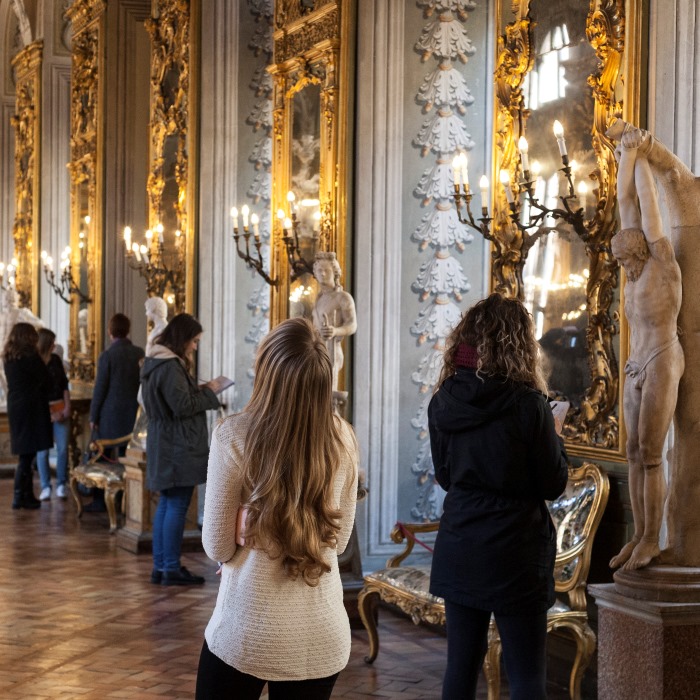BACHELOR OF ARTS IN ART HISTORY IN ROME

Art informs and deceives. It forces us to ask questions about art and about ourselves. What is art, and why is it important to human beings? Who creates art? What are the reasons and cognitive and technical processes for its existence? Do outsiders view a given work of art in the same manner as the work’s intended audience? Why do some observers perceive Marcel Duchamp’s Bicycle Wheel as a remarkable work worthy of a place in New York’s Museum of Modern Art, while others see it as an overpriced stool with a bicycle wheel mounted on top?
With its wealth of archaeological sites, churches, museums, and contemporary art galleries, Rome offers an environment of unparalleled richness for the study of art and the human experience across time. John Cabot University’s Bachelor of Arts degree in Art History emphasizes art-historical theories and analytic methods with a strong focus on the visual arts of Europe, the Mediterranean and North America. Given the University’s location at the geographical and temporal crossroads of Europe and the Mediterranean, the program places a strong emphasis upon the visual cultures of Rome and of Italy. After an initial series of four foundation courses, majors develop their command of art history and its approaches through upper-level courses in a variety of pertinent subject areas. The major culminates in the fourth year, when each student selects a topic and works individually with a specialized faculty member to research and write a senior thesis. Students can win internships at institutions that include the Museo Nazionale Romano, the Galleria Doria Pamphilj, and the Biblioteca Angelica, Europe’s first public library and a major repository of illuminated manuscripts.
The faculty consists of internationally recognized scholars strongly committed both to teaching and to research. The faculty members are active in their fields and often involve students in their research endeavors. Earning a bachelor’s degree in art history can constitute the first step toward a fascinating career in the field—for example, as a college professor, a museum or gallery curator, a museum educator, or a cultural officer in the diplomatic corps. The skills gained through art historical training, especially analytic and critical thinking and effective writing, offer outstanding preparation for careers in law, journalism, marketing, media, secondary education, and many other creative vocations.
We offer numerous merit-based Presidential Scholarships and need-based Assistance Grants.

REQUIREMENTS FOR THE DEGREE:
A. The Proficiency and General Distribution Requirements of the University.
B. Core Curriculum
The core courses are aimed to provide the student with a solid foundation for the study of art history and prepare the students for the Senior Thesis.
- AH 151 Foundations in Ancient Art
- AH 152 Foundations in Medieval Art
- AH 153 Foundations in Early Modern Art
- AH 154 Foundations in Modern and Contemporary Art
- One AS (Studio Art) course (100-300 level)
- Three AH or ARCH courses (200-300 level)
- AH 240 Art Historical Thinking
- AH 460 Research Practicuum
- AH 480 Senior Thesis
C. Major Electives
Six Art History courses, of which:
- Three must be 300-level AH courses
- One must (if not already taken in the core) be a 200-300 level AH course with a substantial onsite component
- Two 200-level AH courses may be substituted with any 200-300 level courses chosen from ARCH, AS, CL, CMS, DMA, HS, or PH
D. General Electives sufficient to give a total of 120 credits.
As of Fall 2022, students who declare a Major in Art History are required to follow the AH 151, AH 152, AH 153, and AH 154 course sequence.
Art History majors who began their studies prior to Fall 2022 should substitute AH 141 with AH 151, AH 142 with AH 152, AH 143 with AH 153, and AH 144 with AH 154.